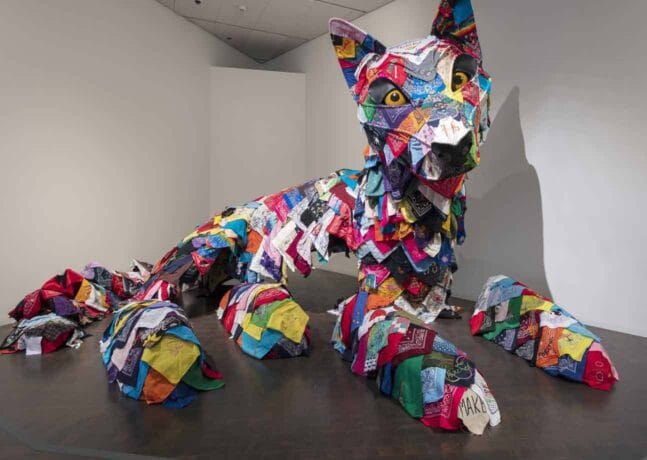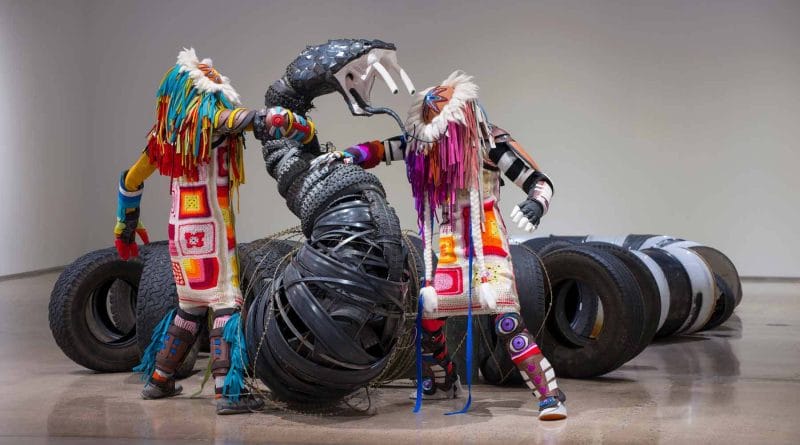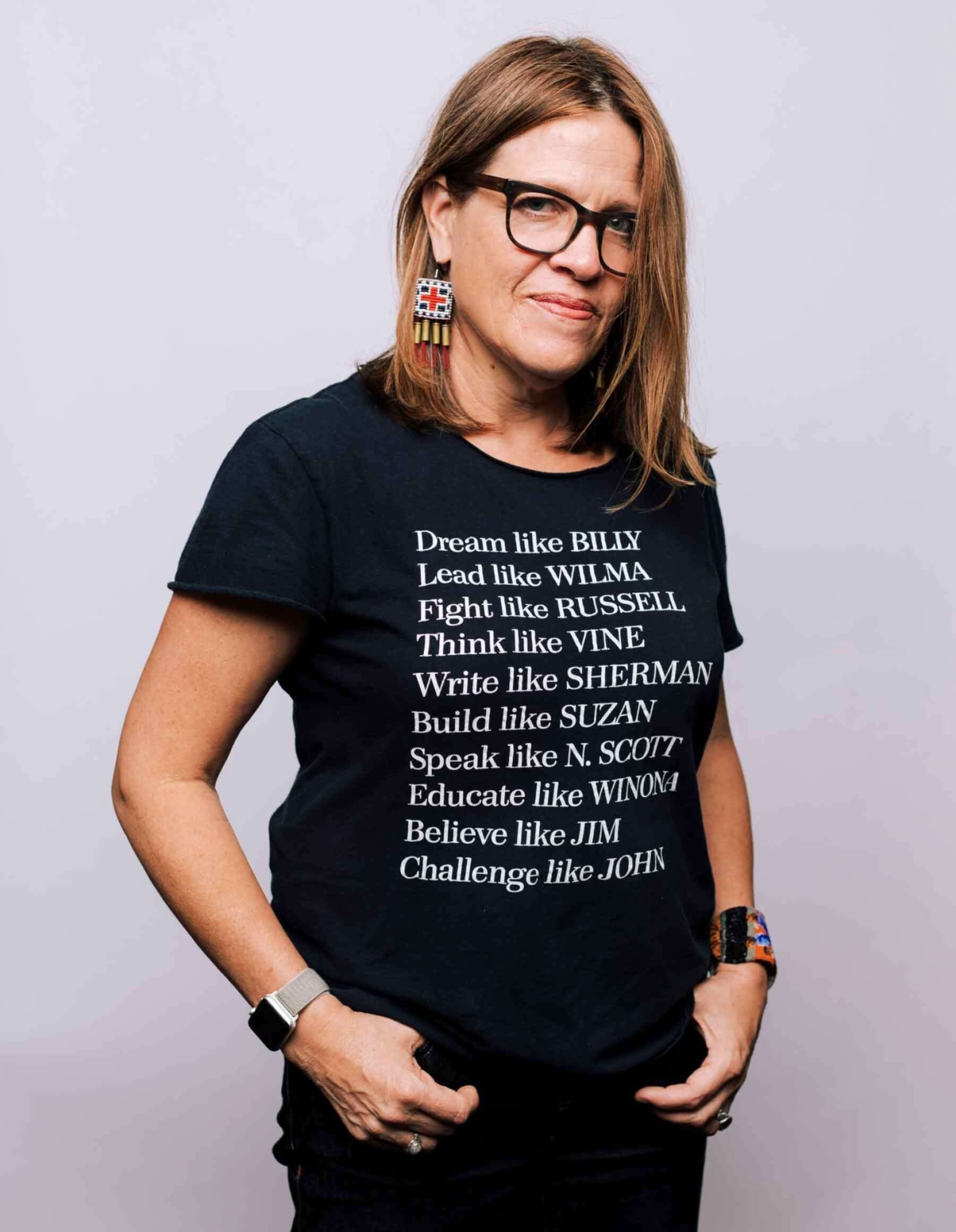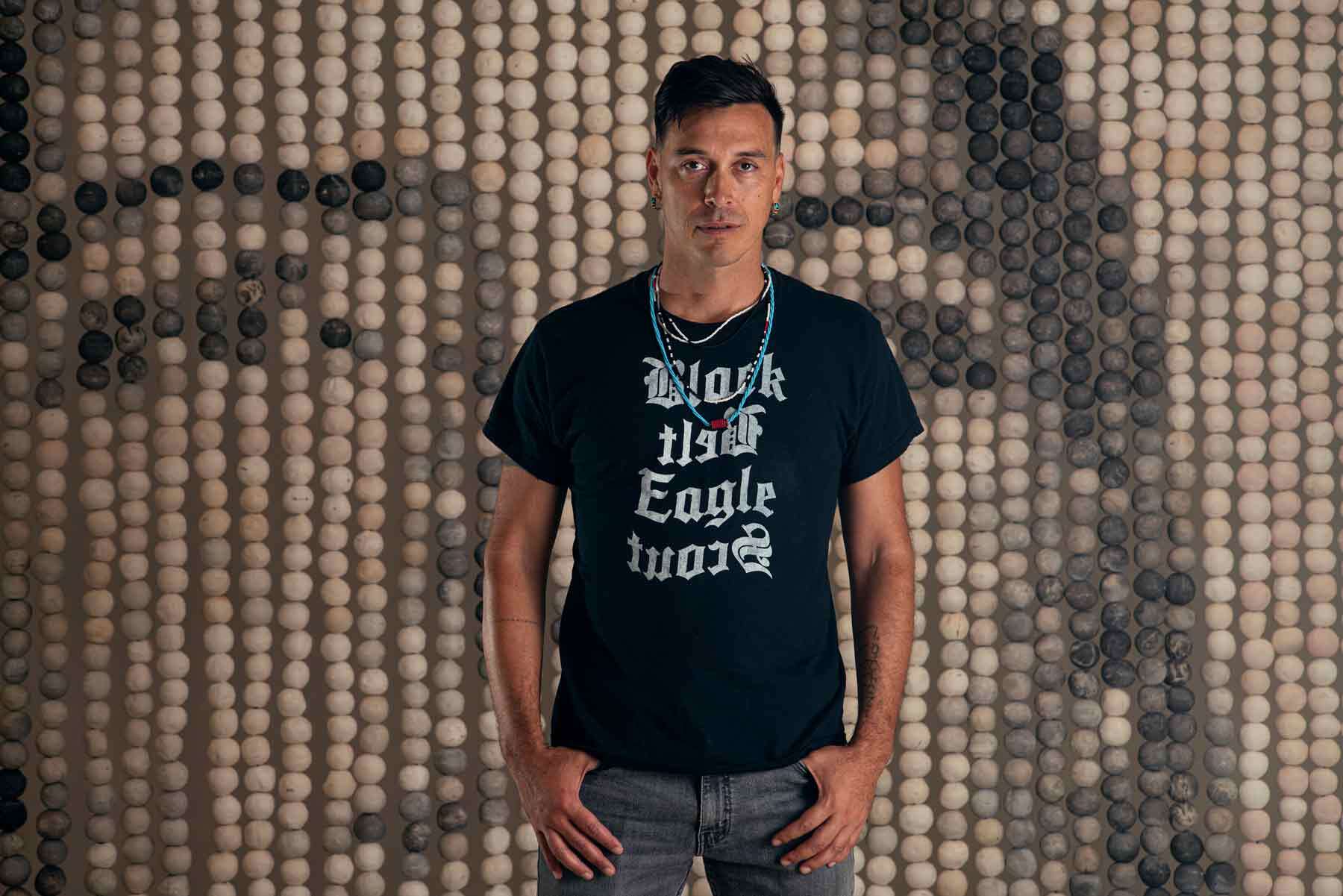EACH/OTHER: Marie Watt and Cannupa Hanska Luger
*Featured photo: Cannupa Hanska Luger (Mandan, Hidatsa, Arikara, Lakota and European), This Is Not A Snake, 2017-2020. Ceramic, fiber, steel, oil drums, concertina wire, ammunition cans, trash, found objects. Two front figures: One Who Checks & The One Who Balances, 2018. Ceramic, riot gear, afghan, wool surplus industrial felt, beadwork by Kathy Elkwoman Whitman. Courtesy and © Cannupa Hanska Luger. Photo courtesy of the Heard Museum, Craig Smith.
Peabody Essex Museum
East India Square, 161 Essex Street, Salem, MA 01970
Toll Free 866-745-1876
On view January 29–May 8, 2022
The museum is open Thursdays, Saturdays & Sundays 10 am–5 pm, Fridays 10 am-7 pm and holiday Mondays.
INFO: Call 866-745-1876 or visit pem.org

The Peabody Essex Museum (PEM) presents an exhibition of two internationally-renowned contemporary Indigenous artists who view creativity as a boundless process that connects each of us. Marie Watt, an enrolled citizen of the Seneca Nation with German-Scots heritage, and Cannupa Hanska Luger, an enrolled citizen of the Mandan, Hidatsa, and Arikara Nation with Lakota and European heritage, collaborate to create artwork that fosters empathy and understanding among individuals, neighbors, and communities and seeks to connect us to the world around us. Their art practice comes from — and aims to produce — activism and social engagement. Each/Other: Marie Watt and Cannupa Hanska Luger is organized by the Denver Art Museum and is on view at PEM from January 29, 2022 through May 8, 2022.
For Marie Watt and Cannupa Hanska Luger, art can be a social project where participants become engaged, invested, and able to forge new relationships. The 26 large scale works on view represent a wide range of media — from carved wood and fabric sculpture to photography and video — and are divided into two sections that explore each artist’s creative interactions with community, materials and the land. Several works were produced through a collaboration with non-artist volunteers in what is known as “social practice”, artwork that focuses on the interaction between audience, social systems, and the creator. Visitors are encouraged to search for signs of the many hands that helped to create the works on view and consider how the natural environment contributed resources to this exhibition.
“These works are tangible but, more importantly, are memories and evidence of collaborations — people coming together and taking part in something greater than themselves,” said Karen Kramer, PEM’s Curator of Native American and Oceanic Art and Culture. “Gathering to socialize and work on something together is often the way knowledge is shared and objects are made in Indigenous communities. For these artists, collaboration is not a means to an end. It’s central to their art practice, fuels their passion and spurs their action in making a difference in the world.”
Working in tandem and across many days during the global pandemic, Watt and Luger merged their practices on Each/Other, (2020-2021) a larger-than-life sculpture created with people from around the world. The artists asked participants to embroider messages on bandanas and consider how acts of collaboration help heal broken bonds with the environment and with each other. They are bound together as a monumental, 20 x 12 x 9 foot she-wolf, a symbol which reflects the idea of kinship with animals inherent in Indigenous beliefs. The bandanas came to the artists by the hundreds, sent from a cross-section of people of various ages and ethnicities. Their timely messages include “MMIW,” calling attention to the missing and murdered Indigenous women epidemic and “Dismantle All Colonial Systems Now.” Some messages range from the personal to the universal, including “Be A Good Ancestor” and “I Miss Your Embrace.”
“Each/Other not only presents the results of Watt and Luger’s past collaborative projects, but invites us to be a part of the artists’ creative processes, and through that experience, to become aware of the world outside of our immediate and limited vision,” says John P. Lukavic, organizing curator and the Denver Art Museum’s Andrew W. Mellon Curator of Native Arts. “Together, Watt and Luger show us the ways in which art moves beyond the end-product, beyond a static or luxury item, to become the very process of creation itself — unbound and limitless.”
For Luger, “Art is a verb, not a noun. Art is a practice, it’s an activity. It is an action.” His art-making practice interweaves performance and political action to communicate stories about 21st-century Indigeneity. Using short instructional videos distributed on social media, some of Luger’s projects invite others into his creative process to collaborate on pressing issues. Although the participants from all corners of the world may never meet, each person is invested in the meaning of the work and each project celebrates the effort it takes to collectively affect change.

Watt’s ongoing crowd-sourced Blanket Stories is a series of sculptural works made from stacked blankets that the artist has described as a visualization of how we enter and leave this world: in blankets. The work is inspired by the stories of beginnings, endings and lives lived in between. The blankets, collected from the public, also reference how Native Americans gift blankets to mark and honor important life events.
One of Luger’s work on view is Every One (2018), a pixelated portrait made through social collaboration. Composed of over 4,000 individual handmade clay beads created by hundreds of people across the U.S. and Canada, the piece is meant to cut through the data and humanize the numbers of missing and murdered Indigenous women, girls, queer and trans community members. Realizing the connection between workers hired by lumber, oil, and gas companies and increased murders and disappearances, Luger asks us to shoulder some culpability in the processes that lead to such violence and to find ways to heal.
As part of her artistic practice, Watt creates textiles that bring people together through sewing circles. For her 2017 work, Companion Species: Ferocious Mother and Canis Familiaris, Watt led a conversation on the theme of equity where she asked, “what would the world look like if we thought of ourselves as companion species; places, nations, generations, beings, all interconnected.” The resulting artwork — which has the words Equity, Love, Shelter, Solidarity, and Voice stitched onto the surface — helps us see the thoughts and feelings of people in the group made manifest by many hands working together.
ABOUT MARIE WATT
Based in Portland, Oregon, Marie Watt (b. 1967) is a citizen of the Seneca Nation whose practice explores multiple materials and the collaborative act of artmaking. Her artworks are held in collections across the United States and Canada, including the Peabody Essex Museum, Denver Art Museum, the Portland Art Museum, the Whitney Museum of American Art, Crystal Bridges Museum of American Art, and the National Gallery of Canada. Watt has received public art commissions from the Tacoma Art Museum, the Bill and Melinda Gates Foundation, the Denver Art Museum, and the United States Embassy in Islamabad, Pakistan, through the U.S. State Department’s Art in Embassies program. Watt exhibits internationally and is represented in Portland, by PDX Contemporary Art, in Seattle, by Greg Kucera Gallery, and in New York by Marc Straus Gallery.
ABOUT CANNUPA HANSKA LUGER
Born on the Standing Rock reservation in North Dakota, Cannupa Hanska Luger (b. 1979) is a New Mexico-based interdisciplinary artist and a citizen of the Three Affiliated Tribes of the Fort Berthold Reservation. His artworks address environmental justice and gender violence. From 2018 to 2020, Luger received fellowships and awards from such organizations as the Smithsonian Institution, the Center for Crafts, the Joan Mitchell Foundation, and the Museum of Arts and Design. Luger has exhibited at Princeton University Art Museum, Art Mûr, Crystal Bridges Museum of American Art, Orenda Gallery, and the National Center for Civil and Human Rights, among others. Luger holds a BFA in studio arts from the Institute of American Indian Arts and is represented by Garth Greenan Gallery in New York.
ABOUT THE PEABODY ESSEX MUSEUM
Over the last 20 years, the Peabody Essex Museum (PEM) has distinguished itself as one of the fastest-growing art museums in North America. Founded in 1799, it is also the country’s oldest continuously operating museum. At its heart is a mission to enrich and transform people’s lives by broadening their perspectives, attitudes and knowledge of themselves and the wider world. PEM celebrates outstanding artistic and cultural creativity through exhibitions, programming and special events that emphasize cross-cultural connections, integrate past and present and underscore the vital importance of creative expression.



